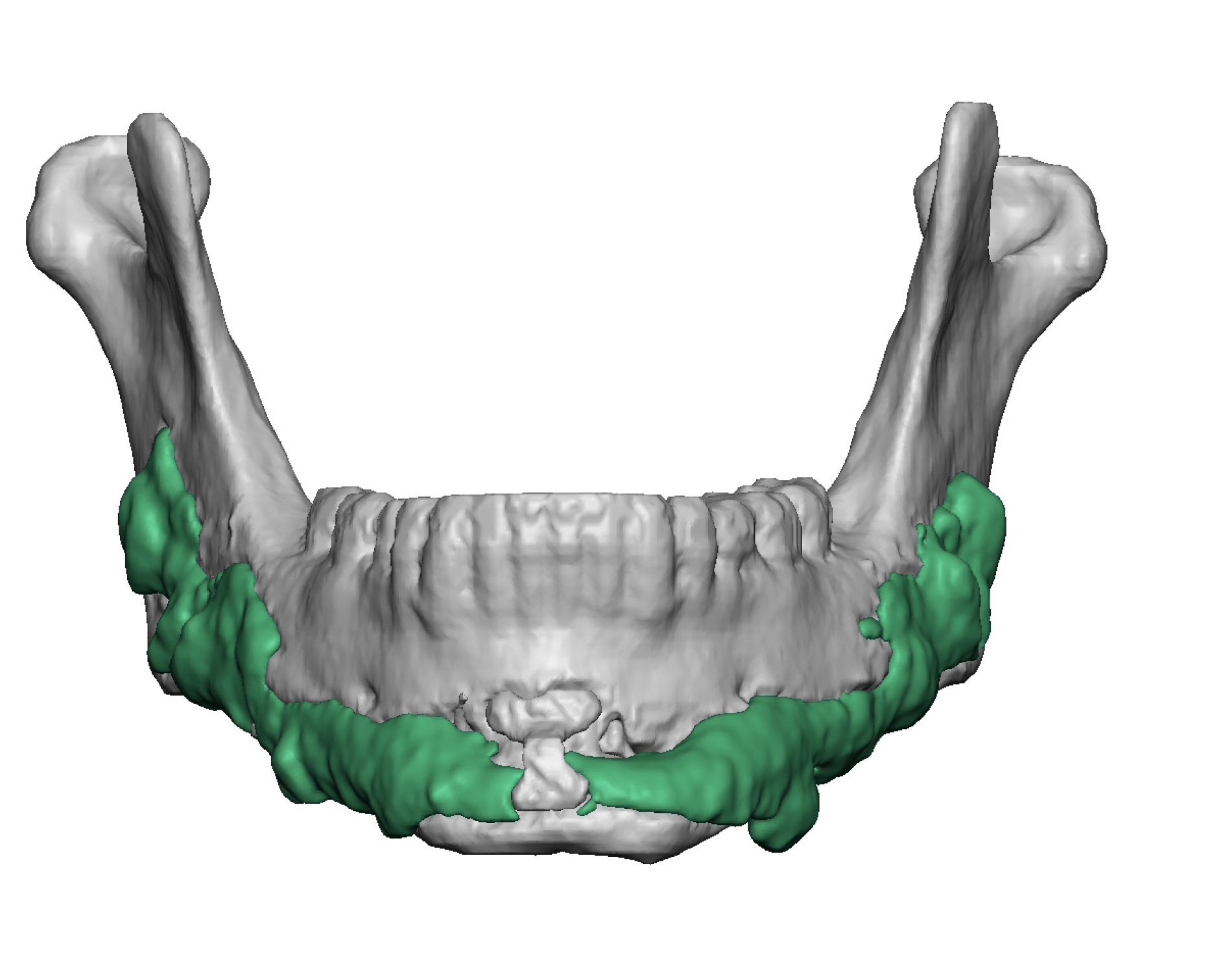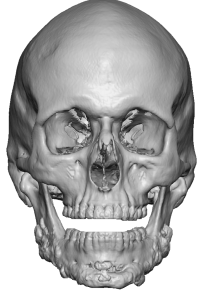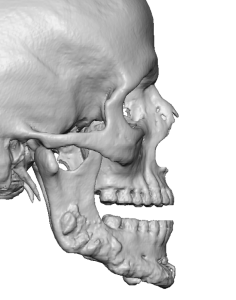The concept of bone imprinting by implants, most manifest along the chin and jawline due to its thicker muscle coverage, has been conclusively shown by high quality 3D CT scans. The interposition of an implant under tight overlying soft tissues along the jawline results in a tissue adaptive response (pressure relief)( that allows some settling of the implant into the bone. (imprinting) This occurs regardless of the implant material albeit silicone, Medpor, PEEK or titanium.
An interesting question is whether such implant bone imprinting would occur if a bone cement material was used, specifically hydroxyapatite. (HA) Being a synthetic inorganic calcium phosphate material it is the most biocompatible ‘implant’ for bone augmentation short of autologous bone. This would be a hard patient example to find since so few jawline augmentations have been tried with bone cements.
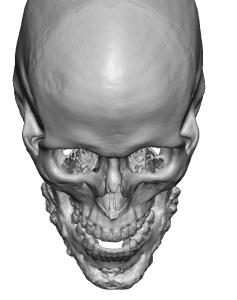
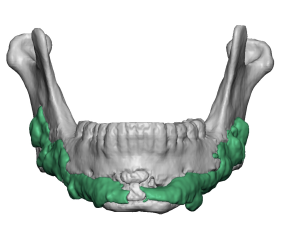
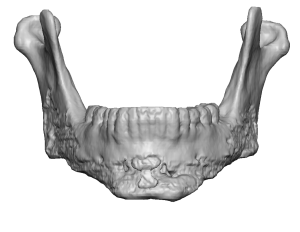
While HA bone cement will allow bone to directly bond to it, a appealing biologic property, it stills acts just like any other implant material. Its presence causes an interpositional pressure which the body relieves by having it settle into the bone. Not surprising it’s close inorganic chemical composition to bone does not eliminate this natural biologic reaction from occurring.
Dr. Barry Eppley
World-Renowned Plastic Surgeon

